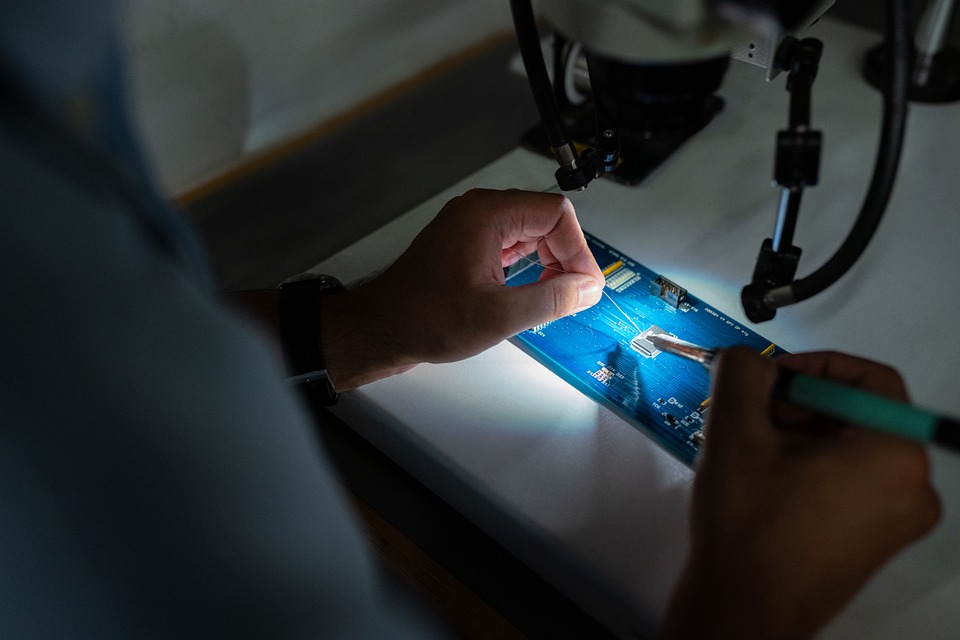As part of the soldering process, a soldering iron is used to heat a small amount of the fusible metal alloy known as solder to an extremely high temperature.
This solder substance is guided to flow into and around the spaces among and about two factors or workpieces as it melts. The glue is then allowed to cool and solidify, resulting in a permanent and conductive connection that can only be melted back into a liquid by heating the solder sufficiently. Desoldering is the name given to the procedure of warming and detaching previously soldered joints.
Soldering iron needs to be plucked, but cordless soldering iron is convenient. When working with small or delicate components, it’s best to grasp the iron by its insulated handle, making it easier to control the tool’s movements.
To what use is a Soldering Iron devoted?
The amount of items a soldering iron may be used to make, repair, augment, or disassemble is practically infinite. A soldering iron can be divided into two categories: those used to solder and those used to de-solder.
When soldering, the hot tip of the iron is heated to extremely high temperatures before melting the solder wires all around components that will be soldered. The bond will become permanent as it cools back down to room temperature – at most until it has been de-soldered.

Because the soldering iron must heat up to a liquid state without melting or harming the components, the temperature must be precisely controlled. Some more sophisticated irons have temperature controls that allow greater control and compatibility with a wider variety of soldiers. When plugged into the mains or the other acceptable power source, most of these heaters will warm themselves up automatically to a predetermined level.
Soldering is generally considered to be a simple and uncomplicated operation. On the other hand, professional engineers have spent years perfecting their soldering techniques and know precisely when and how to use a soldering iron to get the most outstanding results.
In the DIY world, cordless soldering irons were a game-changer. They’re simple to use, convenient, and reasonably priced compared to a good soldering gun. If you’re looking for the most excellent soldering iron, you’ve come to the right place! The following considerations went into compiling this list.
Depending on the manufacturer, soldering irons can be powered by batteries or butane. The butane gas-based soldering gun, as its name implies, has a high-temperature capacity but comes at a high cost. The most excellent option is one that is powered by batteries. In this case, too, you have the option of using a soldering gun with an interchangeable or rechargeable battery. You can make your decision based on your personal preferences.
The iron’s entire run time is the second most crucial factor to consider. The typical battery life of a cordless soldering iron in this day and age is around 40 minutes. However, butane-powered devices may have much more.
In addition, cordless soldering irons come, including a few more components. The LED focus light is one of the most frequent accessories that they come with. Soldering in dimly lit areas or avoiding light shadows is made easier with the help of these.
Keeping Your Soldering Equipment in Top Shape
Your soldering equipment can last longer if you take proper care of your irons, tips, and other soldering supplies. Keeping your soldering iron clean is one of the most fundamental forms of upkeep and maintenance you can undertake with this piece of device.
A quick and simple technique to remove any residue of solder or carbon from heated metal tips is to hand wipe them clean after each use. However, if you use it frequently, you may need to clean it again.
Regularly using an iron toothbrush or a soldering iron washing sponge is generally advised for the best results possible. If you buy a cleaning tray, you’ll also get some flux or powder solder sponge or a spiralling ball of metal wool. To help avoid tool oxidation, more modern tip-cleaning kits leave a thin solder film on the tip.
Read Also
